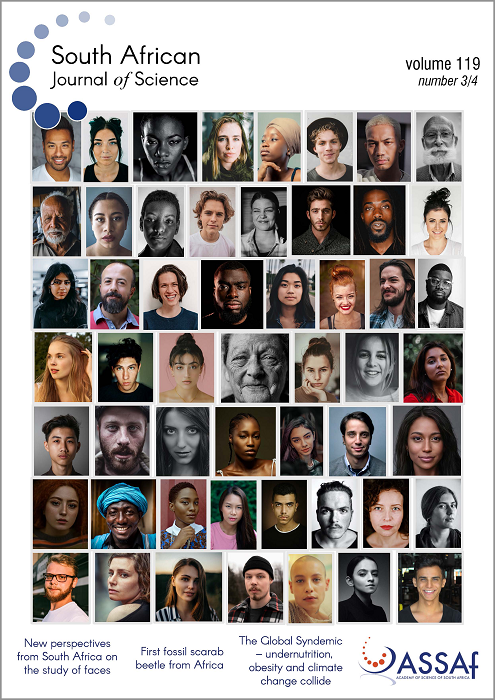Evaluating 3D human face reconstruction from a frontal 2D image, focusing on facial regions associated with foetal alcohol syndrome
DOI:
https://doi.org/10.17159/sajs.2023/12064Keywords:
3D morphable models, model fitting, face reconstruction, fetal alcohol syndrome, 3D face analysisAbstract
Foetal alcohol syndrome (FAS) is a preventable condition caused by maternal alcohol consumption during pregnancy. The FAS facial phenotype is an important factor for diagnosis, alongside central nervous system impairments and growth abnormalities. Current methods for analysing the FAS facial phenotype rely on 3D facial image data, obtained from costly and complex surface scanning devices. An alternative is to use 2D images, which are easy to acquire with a digital camera or smart phone. However, 2D images lack the geometric accuracy required for accurate facial shape analysis. Our research offers a solution through the reconstruction of 3D human faces from single or multiple 2D images. We have developed a framework for evaluating 3D human face reconstruction from a single-input 2D image using a 3D face model for potential use in FAS assessment. We first built a generative morphable model of the face from a database of registered 3D face scans with diverse skin tones. Then we applied this model to reconstruct 3D face surfaces from single frontal images using a model-driven sampling algorithm. The accuracy of the predicted 3D face shapes was evaluated in terms of surface reconstruction error and the accuracy of FAS-relevant landmark locations and distances. Results show an average root mean square error of 2.62 mm. Our framework has the potential to estimate 3D landmark positions for parts of the face associated with the FAS facial phenotype. Future work aims to improve on the accuracy and adapt the approach for use in clinical settings.
Significance:
Our study presents a framework for constructing and evaluating a 3D face model from 2D face scans and evaluating the accuracy of 3D face shape predictions from single images. The results indicate low generalisation error and comparability to other studies. The reconstructions also provide insight into specific regions of the face relevant to FAS diagnosis. The proposed approach presents a potential cost-effective and easily accessible imaging tool for FAS screening, yet its clinical application needs further research.
Published
Issue
Section
License

All articles are published under a Creative Commons Attribution 4.0 International Licence
Copyright is retained by the authors. Readers are welcome to reproduce, share and adapt the content without permission provided the source is attributed.
Disclaimer: The publisher and editors accept no responsibility for statements made by the authors
How to Cite
- Abstract 813
- PDF 862
- EPUB 421
- XML 134
Funding data
-
European Commission
-
Department of Science and Innovation, South Africa
-
National Research Foundation
Grant numbers 98788 -
Schweizerischer Nationalfonds zur Förderung der Wissenschaftlichen Forschung
Grant numbers P400P2_191110












.png)